Phase 1
Ajami Vocational Training Program
There are approximately 13 million out-of-school children in northern Nigeria. A considerable number of them are children enrolled in an alternative school system referred to as the Almajiri system, which includes various educational models. Many of these children are victims of developmental neglect and marginalisation at different levels of leadership. Unfortunately, for most of them, the current Almajiri education system does not prepare them with adequate knowledge and skills to contribute to their own economic and societal wellbeing. Thus, most of them end up engaging in street begging, menial low-paying jobs, while others become victims of opportunistic politicians, criminals, and gangs.
To address this, the IET (Islamic Education Trust) in partnership with AMA Foundation (Abdullahi Musa AbdulRazaq Foundation), DIWA (Development Initiative of West Africa), and MSMS (Mahmoud Sabo Muslim School) collaborated to establish the Ajami vocational training program. Most of the almajirai already understand Hausa and also know how to read and write Quranic Arabic. Therefore, the established Ajami program combined the two models i.e., learn to read and write Hausa using Arabic script.
What we discovered was that, within just about 2 weeks, they are functionally literate in the language that is most important to them. In essence, they could write in Ajami and Hausa, take notes and, most impressively, read newspapers and all other sources of learning that they were never exposed to prior enrolment. This gave them the foundation to enhance their accelerated learning of basic numeracy. This essentially gives the students a confidence boost and increase their love and passion for learning, literature, and further reading.
The fourth-month pilot program titled “Ajami Vocational Training Program -Phase 1” was conducted for 50 almajirai (ages 15-25). The beneficiaries were carefully selected from 9 Tsangaya schools in Minna-Niger State to attend weekend (Saturday and Sunday) classes from 9:00 am-2:00 pm. They learned basic numeracy and literacy in Hausa and Ajami languages, as well as Tajweed (rules guiding the proper recitation of the Qur’an). During the pilot, the students were introduced to a set of 29 distinct vocational skills designed to pique their interest in a particular vocation.
This also served as a career guidance and counselling avenue for the students.
The pilot recorded very impressive attendance as class attendance never went below 80% of the population. However, we recorded 3 drop outs due to relocation to their state of origin mid-way into the program. Therefore, a total of 47 students graduated from the program successfully at the end of the 4th month.
The pilot project recorded tremendous success as the students could confidently read and write in both languages and perform basic arithmetic over a short period of 4 months. This success has prepared them for phase II (Almajiri Skill Acquisition Program –ASAP), where they will enrol in the vocational guild of their interest to learn.
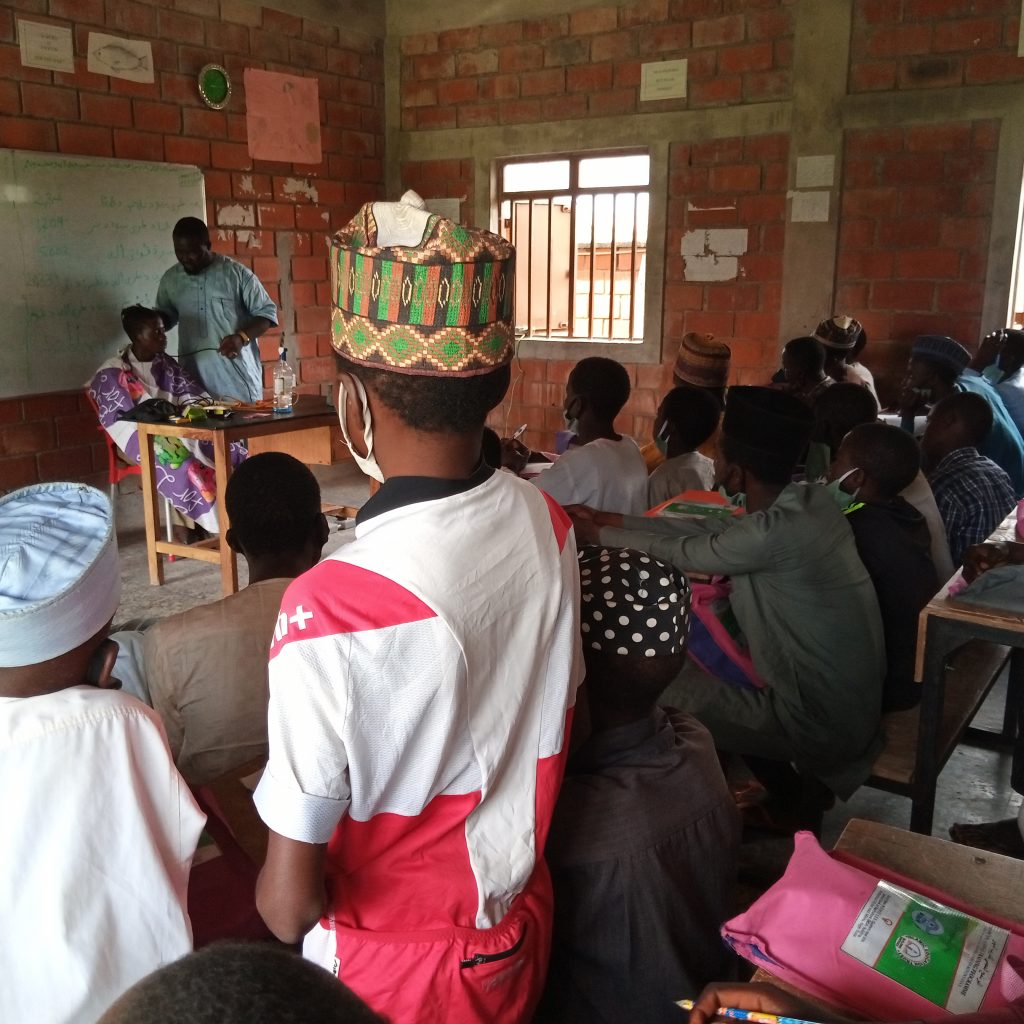
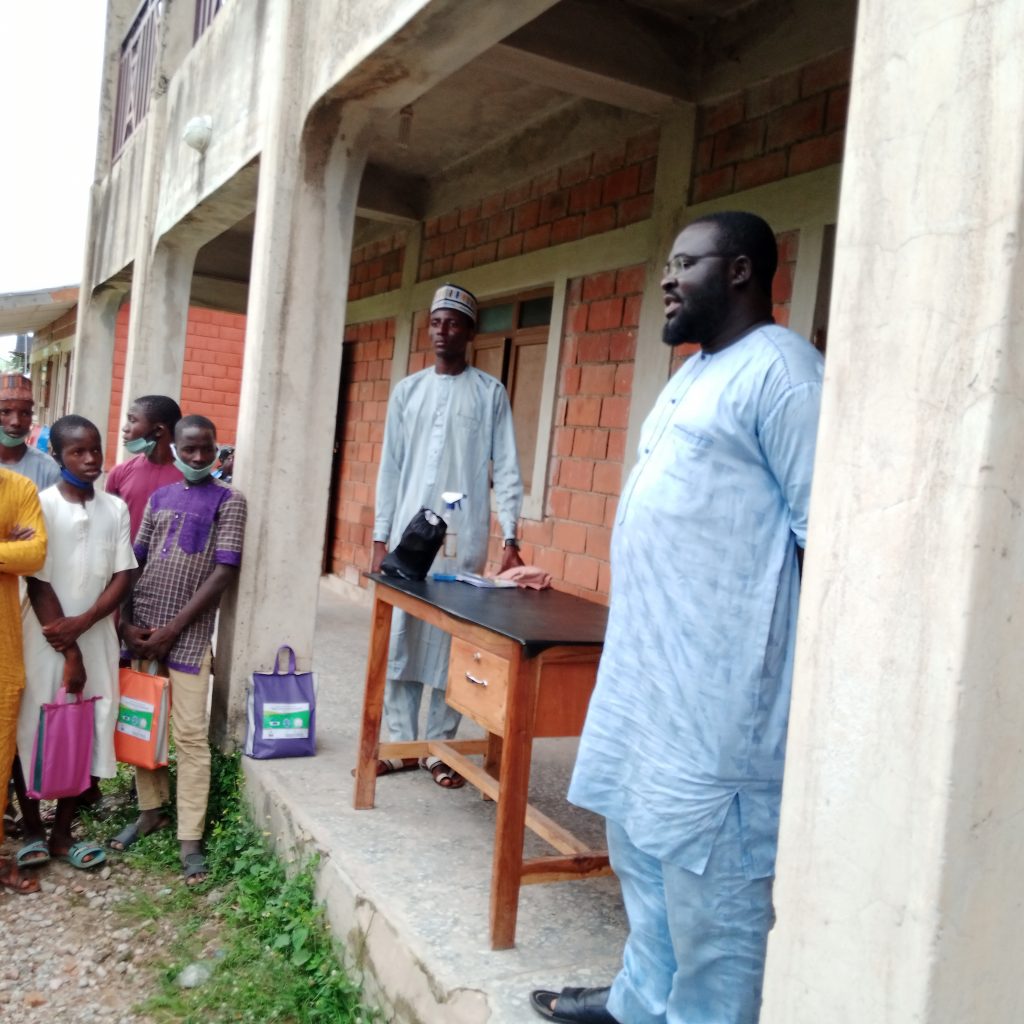
Development of Training Resources
For effective knowledge transfer in a well-structured way, training materials in the following four subject areas were developed by experts of the subjects.
Ajami Literacy- Books 1-3: Used for teaching the students how to read and write in Ajami. Book
1 centres on the Ajami alphabet and sounds. Book 2 and 3 are used for teaching comprehension and basic grammar.
In addition, Newspapers in Ajami were also made available for reading practices.
Hausa - Books 1- 3: Used for teaching the students how to read and write in the Hausa language.
Book 1 centres on Hausa alphabets and sounds. Book 2 and 3 are used for teaching comprehension and basic grammar.
Newspapers in Hausa were also made available to the students for reading practices.
Ajami Numeracy- Single Volume: Developed to teach the students basic day-to-day arithmetic which they will require in learning a skill and to carry-out transactions.
Tajweed- Single Volume: Developed for teaching the students the proper way of reciting the Qur’an.
Selection of Beneficiaries
Students were selected from 9 different Almajiri schools/ Tsangaya across Minna city of Niger State for the pilot. A total of 70 students were interviewed from which 50 were selected using the
following set of criteria:
i. Gender: Male
ii. Age: falls within ages of 15-25 years
iii. Availability: Ability to commit to 4 months of the project with 2 contact sessions weekly (Saturdays and Sundays)
iv. Passion for knowledge: passion and drive to learn
This process involved scheduled visits to each of the Tsangaya by members of the project management team including training facilitators while their malamai witnessed the session.
The students were tested in writing in Ajami and Hausa languages – this was quite challenging for 90% of them. To test their reading ability, they were asked to read from selected passages of newspapers in both languages. Only a few of them (about 15%) could attempt to do so.
This process witnessed by their malamai made them realise it was something worth learning. Some of them requested if such a similar program can be organised for them, i.e., the malamai too.
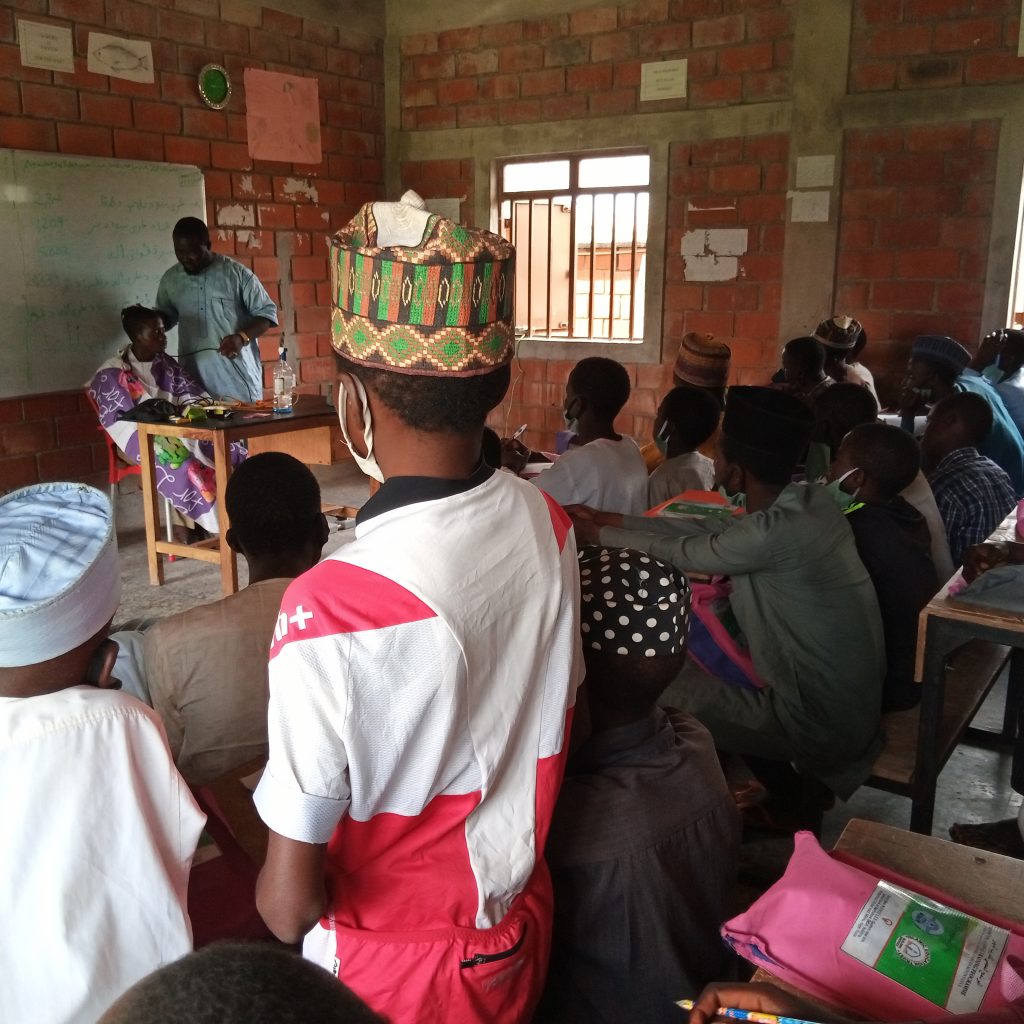

Skill Exposure (Career Guidance and counselling activity)
The students were introduced to a set of 29 distinct vocational skills designed to pique their interest in a particular vocation. This served as a career guidance and counselling session, which resulted in their selecting the three skills, they found most interesting.
The vocational skills trainers gave practical demonstrations of how they work. They also talked about the opportunities that exist in their industry and shared their experiences. Certain skills required taking the students to the workshop of the artisans for more detailed and practical learning while others were conducted in the class training venue.

Class activities
The students were divided into two classrooms of 25 each for effective classroom management. During weeks 1-4, only three subjects were taught (Tajweed, Hausa, and Ajami Literacy), to acquaint the students with learning before introducing the 4th subject (Numeracy) in week 5. From inception, the students displayed enthusiasm for learning through active participation and punctuality to the training centre. Evidently, most of the students requested more contact sessions as they found learning quite interesting.
From the fifth week, basic arithmetic was introduced. Initially, the students found it challenging because they had never been exposed to arithmetic, but eventually, through the intervention of well-experienced facilitators, different learning methods in numeric counting, basic addition, subtraction, multiplication, measurement, and practical topics relevant for day-to-day transactions were adopted. Classwork, assignments, and group exercise were also issued on a regular basis to reinforce their learning and enable constant feedback.
Midway through the project in the second month, a continuous assessment test (CA) was conducted in all the subjects. The record of their performance reflected significant improvement. A final assessment was conducted in all subject areas at the end of the fourth month which marked the end of phase 1.
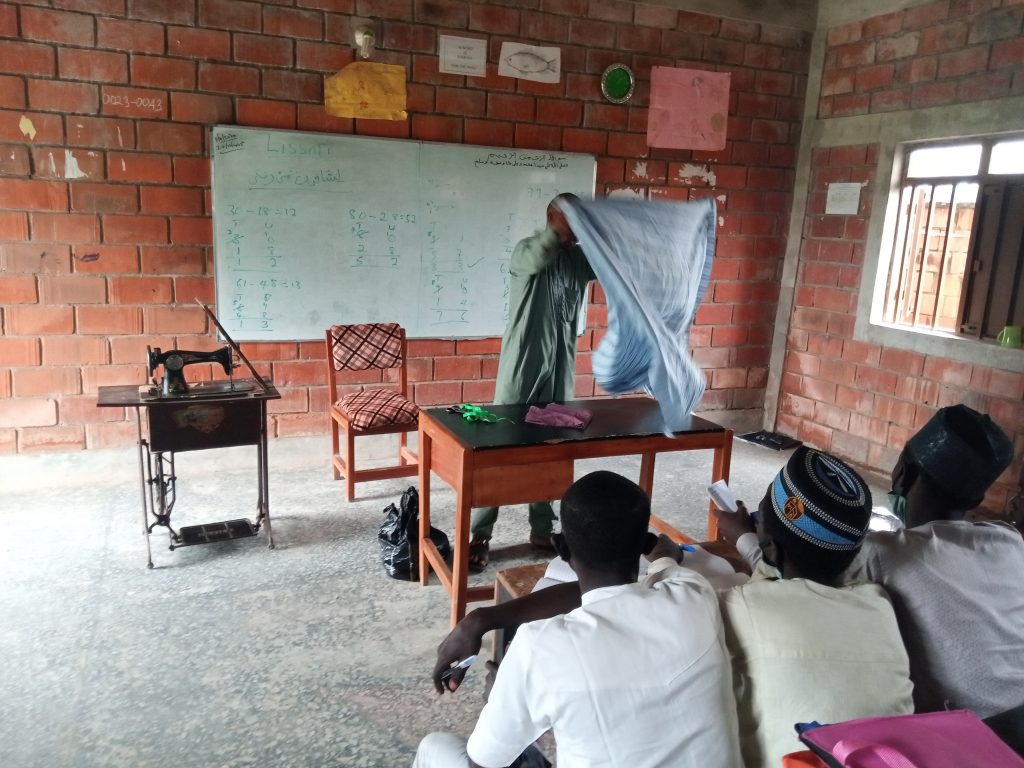
Other activities
School feeding program: This was a brunch offered to the students during each contact session (Saturdays and Sundays).
Transportation subsidy: this was issued to the students to cover transportation from their respective Tsangaya school to the training centre and back to their Tsangaya.
Stipend: A token given to the students each contact session to serve as encouragement for time devoted to learning instead of going for begging or other sorts of menial jobs.
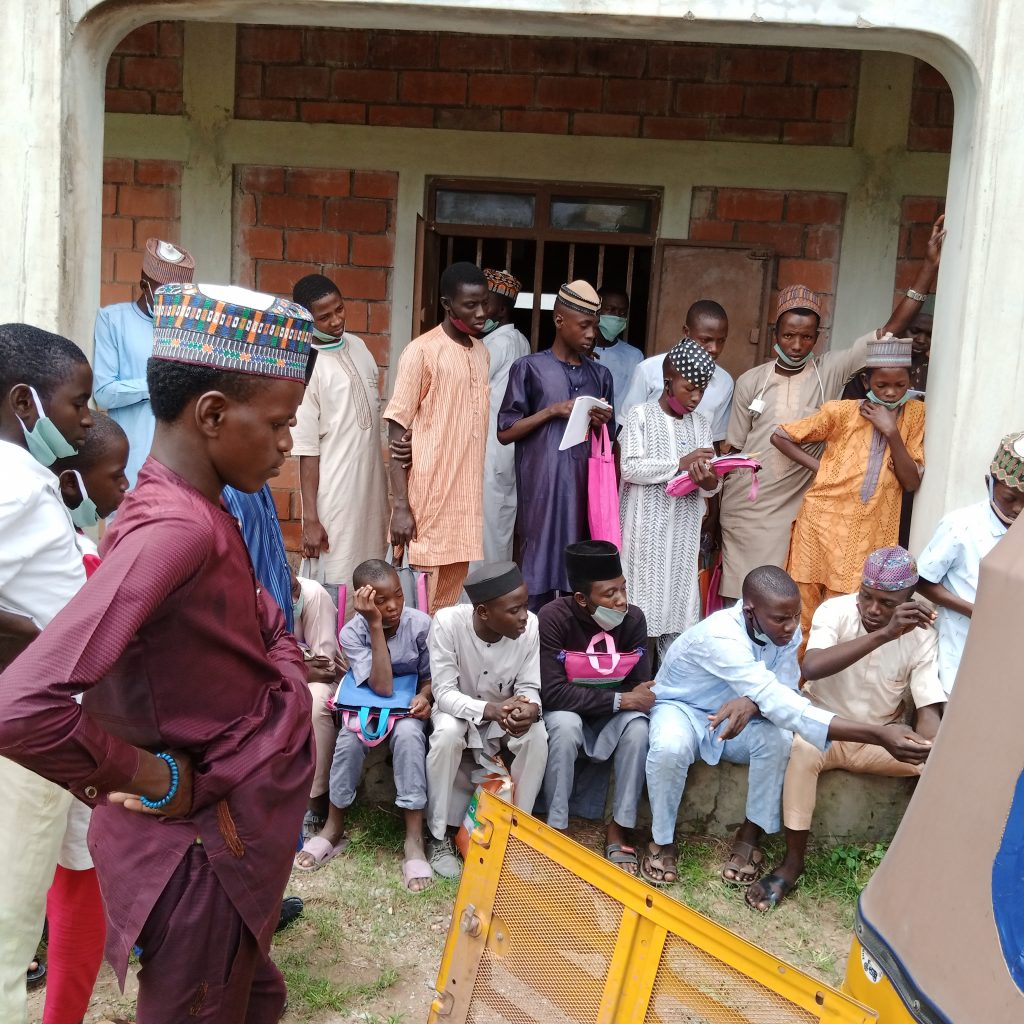
Recommendations
1. Lessons learned from the pilot indicate the possibility of introducing Basic English Language in the future for similar projects. This will require additional two months to make a total of six months instead of four months.
2. Tea breaks and lunch can be arranged with proper financing and adequate provisions for the school feeding program.
3. Further advocacy to the Qur’anic school teachers would be necessary to get their total buy- in and collaboration. That way, they will not resist the initiative for fear of their almajirai being taken away.
4. Organising training of trainers (ToT) for the Tsangaya Teachers will allow a broader impact as that will imply all Tsangaya malamai are able to deliver the content. This can be a dedicated program designed to serve as capacity building for the Tsangaya malamai. This approach of taking education to them rather than taking them to education will lower the cost of erecting structures and resources can be directed to upgrading existing Tsangaya structures. This can enhance ownership and promote the sustainability of the intervention.
5. A comparable pilot for females would be an excellent initiative as well.
6. A mandatory pre-test for all subjects will be conducted on day one before commencing learning, along with a participant selection interview to establish the baseline literacy and numeracy level. In addition to the standard end-of-term assessment, all topics will have an equivalent post-test.
7. Incentives such as the supply of blankets, writing and teaching materials, provision of wells/ boreholes, and better living quarters for the students should be considered for the Tsangaya malamai.








